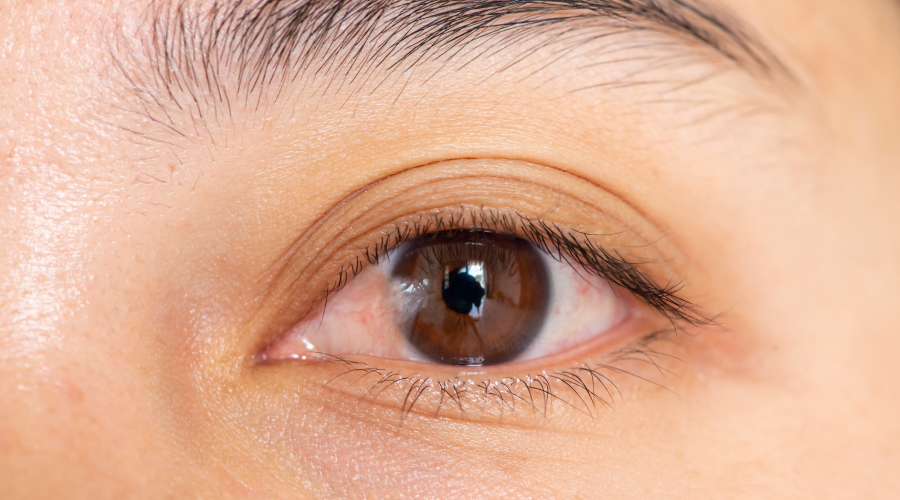

Everyone wants to maintain the best possible health for their eyes and the clearest possible vision for as long as feasible. Irrespective of how much one tries to keep everything safe, unavoidable situations can lead to unwanted medical conditions. There is one such condition that many people face – pterygium eye. This condition is not fatal, but one must know about it and be diagnosed for treatment. Let’s understand through this article.
What is Pterygium Eye?
Pterygium eye, a surfer’s eye, is a condition with a fleshy, raised, and triangular-shaped growth in the corner of your eye. This condition can occur in either corner of your eye, in one, or even in both. Most often, it happens in the corner closest to your nose. You may not experience a lot of symptoms besides irritation. However, if it grows, it may also affect your vision. The illness does not spread to any other area of the face or body and is not malignant. It also does not penetrate the inner of the eye. It may seem red and cause some little irritation.
The doctor may suggest some eye drops to treat the situation in mild cases. However, if the condition is severe, pterygium surgery may be recommended.
Causes of Pterygium Eye
The leading cause of this condition is long-term exposure to UV light. People staying close to latitudes or equator areas and those previously exposed to more UV light due to outdoor work will be more prone to it. Male incidence may be somewhat greater than female incidence in some studies; however, this might simply be due to higher UV exposure rates.
Other possible factors behind pterygium eye may be:
- Chronic irritation from dry and hot weather, dust, or wind
- If over 60 years of age
- Vitamin A deficiency
- Genetics
- Human papillomavirus (HPV)
Symptoms of Pterygium Eye
People can feel or see this condition as it appears very close to the nose. Some symptoms include:
- Itchiness
- Redness
- Burning sensation
- Irritation
- The feeling of something in the eye
Pterygium Diagnosis
Your doctor may suggest an eye exam to diagnose this condition and as per the report, if needed pterygium surgery is performed. Let’s understand how pterygium is diagnosed? Using a microscope, the first step is to do a thorough eye check-up, especially the front structure. The doctor checks the tissue growth from the eye’s white part to the cornea to understand the damage. In addition, your doctor may advise you to undergo several tests, such as a slit lamp exam, corneal topography, visual acuity test, keratometry, etc. These tests are conducted to decide the treatment plan.
Pterygium Treatment
The treatment options vary based on the diagnosis. It may include eye drops for early stage situations, and for more serious cases, doctors may even advise for pterygium surgery. Pterygium treatment using eye drops – The eye drops contain corticosteroids that help relieve this condition’s symptoms. Patients are advised to use eye drops regularly and keep the dried eyes lubricated, resulting in treating the damaged ocular surface.
Over time, the surface tissue regenerates, healing and restoring the tear film. It further helps flatten the pterygium, reducing irritation and growing it. Additionally, specialists can recommend a spray that helps lubricate the eyes and lessen irritation. Sometimes, doctors suggest the patient wear sunglasses as a treatment option. Pterygium surgery is suggested when the condition causes a lot of discomfort or significantly impacts the vision. If the patient is undergoing surgical procedure then the pterygium treatment is often painless and outpatient, where the doctor removes the pterygium with an amniotic membrane graft or conjunctival. Amniotic membranes are used in such surgeries as they have biological properties that help heal wounds. These days, the pterygium surgery uses modern techniques, such as Tisseel glue, instead of long-acting anaesthetics or sutures. Techniques such as amniotic membrane and fibrin tissue adhesive also reduce the complications linked with surgeries. Moreover, the traditional methods had a recurrence of almost 50%, which is reduced to just 1% or less with these new methods.
Can Pterygium Eye be Prevented?
Like any other medical condition, there are ways through which pterygium can also be prevented. The best way is to ensure you wear sunglasses when going out in dry and humid weather. Wearing a hat when stepping out in the sun is also a good idea. This is particularly important for people who spend much time in snow or water to protect their eyes from UV rays. With protection, pterygium can be prevented.
Last Words on Pterygium Condition
If you are suffering from this eye condition, it is better to consult a skilled specialist, especially an eye care specialist. Look for someone with extensive experience in diagnosing pterygium treatment. Once it is diagnosed, depending on the severity and the condition, opt for the treatment option that is best suited. People with this condition can always enjoy daily activities by following simple precautions.




